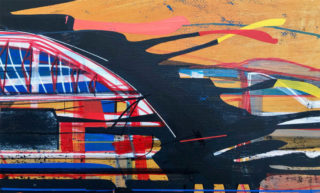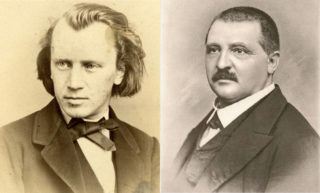Rolls and ruffles for the new Stadtcasino
Sinfonieorchester Basel
9 and 10 September 2020
Ivor Bolton, conductor
Johannes Brahms - Symphony 1
Helena Winkelman - Concerto for two violins
Rolf Liebermann - Geigy Festival Concerto
The first concert of the 20/21 season of the Sinfonieorchester Basel is not only an inauguration of the expanded and renovated Stadtcasino, but also an ode to Swiss music in general. It features two Swiss composers and a first symphony that may transport the listener to the heights of the Alps.
When Johann Rudolf Geigy founded his company in Materialwaren (material goods) in 1758, he could not have foreseen that it would become one of Switzerland’s oldest and biggest companies. Although now a part of Novartis, at its second centenary in 1958, the company still carried his name. For the celebrations, Geigy AG commissioned an orchestral piece with strong Basel affects. Geigy, after all, was founded in Basel. The Swiss composer Rolf Liebermann (1910-1999) took inspiration from one of the city’s strongest traditions, Basler Fasnacht. The Basler Trommel or drum plays a vital role in the parades and so it does in Liebermann’s Geigy Festival Concerto.
Liebermann was a versatile composer with a knack for rhythm, whose works range from classical to light music. This also reflected in his other occupational activities. Not only was he a successful composer, he also was the director of the Hamburg and Paris Opera and the chairman of the jury of the first Eurovision Song Contest in 1956 in Lugano (which Switzerland won).
The concert continues with a new composition commissioned for the inauguration of the new/renovated hall. As a composer who is a soloist (violinist) too, Helena Winkelman, born in Schaffhausen, but living in Basel, writes her music with the instrument and the player in mind. For Gemini, Winkelman’s brand new concerto for two violins, the SOB has engaged two unique soloists (Patricia Kopatchinskaja and Pekka Kuusisto), each with their own very personal way of playing. To see and hear how these will contrast and blend into each other at the world premiere of this work promises to be an exciting event.
The concert is rounded off by Brahms’ first symphony. Knowing that with the publication of this work he was following in the footsteps of Beethoven, the genesis of it was long and laborious. Although the influence of Beethoven on the composition process of Brahms’ first may be overestimated, it is remarkable that he was already 43 year old and a well-established artist when this symphony had its premiere in 1876, coincidentally the year the Stadtcasino concert hall opened its doors. Musicologists and listeners immediately noted the work has a couple of characteristics that reminded them of Beethoven. Brahms’ symphony starts and ends in the same key as Beethoven’s fifth and throughout the first movement the famous, hammering four-note fate rhythm (also from the fifth) is heard in the timpani, horns and other instruments. Most notable, five to six minutes into the large, final movement, Brahms clearly quotes the Ode to Joy. This is preceded by the solemn but optimistic Alphorn theme, introduced by the horns and taken over by the flutes. It leads the listener almost seamlessly to the Ode to Joy, making this symphony a fitting piece for the reopening of one of Switzerland’s most beautiful concert halls.
These English program notes have been published in the magazine (No. 1, 2020/2021) of the Sinfonieorchester Basel.








Comments